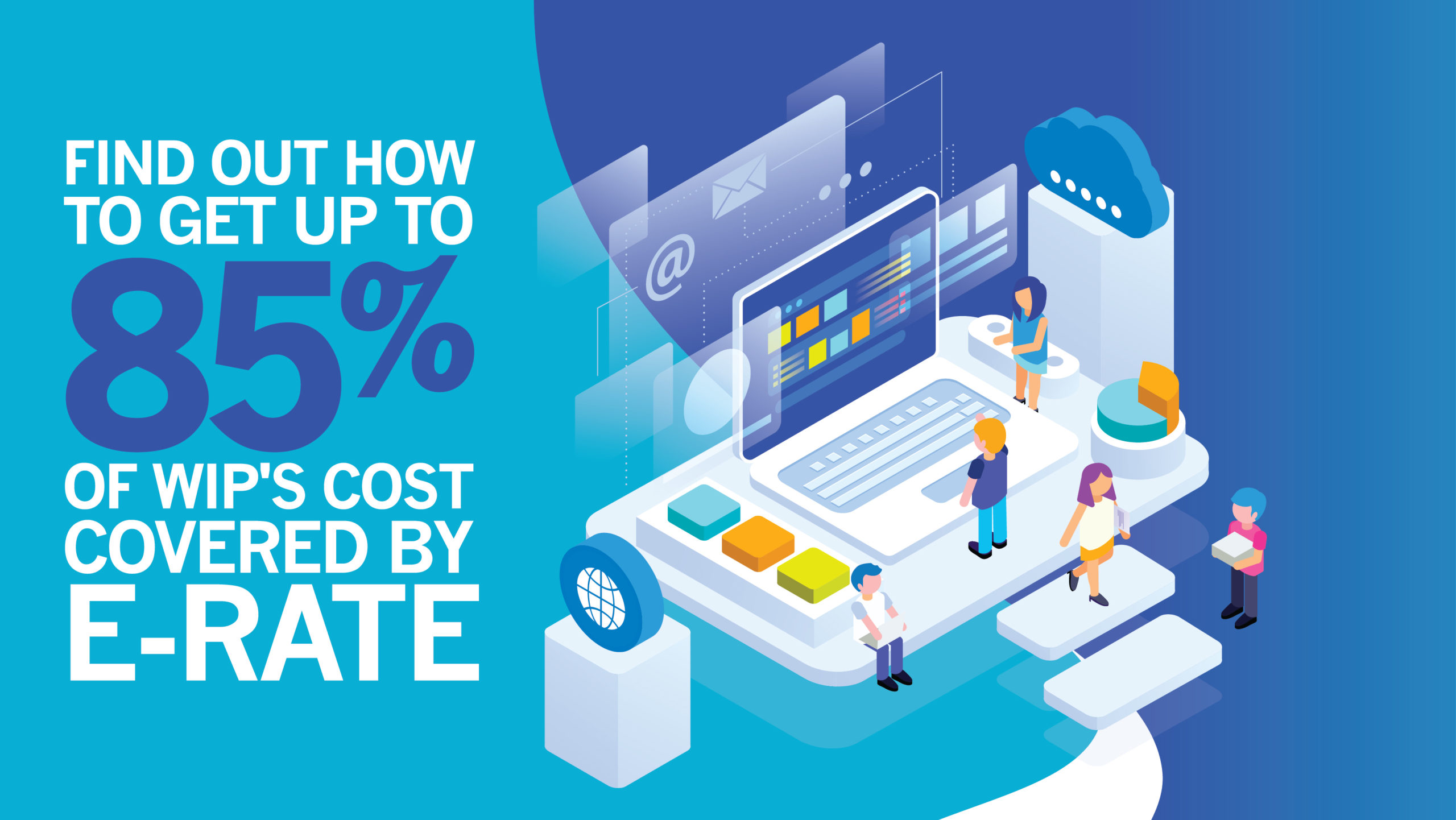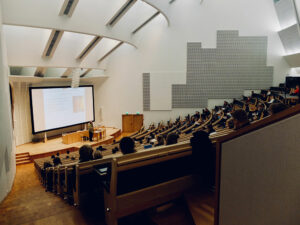
Technology Trends and the Need for WiFi Automation for Universities that Want Worry-Free WiFi

Colleges and universities across the U.S.A. plan to reopen in the fall. While that’s a return to the old normal, the campus environment won’t be exactly the same. As leaders focus on how to make learning safe and feasible, they are increasingly looking to technology to provide some of the solutions. Here are a few trends that IT administrators may see coming to their campuses, and the best ways to optimize the network to prepare it to support students and faculty at all times, no matter what 2021 and 2022 hold.
Higher Education Technology Trends
- More Videoconferencing
While some schools are ending virtual options entirely, others plan to still offer at least a few online courses. In the latter case, IT teams can expect videoconferencing to play an important role in learning; and even in regards to the former, teams should stay open to the fact that an all-in-person school may have teachers that for some reason or another suddenly need to provide a video option, even if only for a week or two. Knowing that the technology exists, and professors and students are familiar with it, videoconferencing might be an attractive option when a class would otherwise have to be canceled.
As different platforms vy for more market space, expect to see updates and innovations as each tries to stand out.
- Smarter, Healthier Buildings
It’s possible that colleges will want to invest in technology that will help keep buildings as sanitary as possible. Some examples would be smart HVAC systems, and detection systems that can identify how many people have been in and out of a room in order to prioritize sanitation. All of this technology runs off the WiFi, meaning IT teams will have to prepare for crowded networks, as well as provide reassurance that networks are reliably working, enabling all connected devices to do their job.
- Outdoor Network Availability
People are going to want to have more options when it comes to both studying and hang out spaces; and some campuses may limit how many students can be in one space. This is going to make it necessary for universities to ensure that students and faculty can connect to the WiFi from anywhere, including outdoor spaces.
- Virtual Reality and Artificial Reality
These technologies have been on everyone’s radar, and there’s reason to believe colleges would want to adopt them. Whether that’s in order to give students real-world experiences when travel is limited, or because professors simply recognize the engagement that could come from simulations, network planners should anticipate AR and VR showing up in the next few years.
- Data Collection and Analysis on the Rise
From AI-based management systems and services, to interactive chatbots, universities and colleges are generating more data than ever before. While not all of that data needs to be collected and analyzed, much of it should as it could hold highly useful intelligence that could help improve education.
Since manual data collection is time-consuming and inefficient, schools will look for automated systems that will do the work for them, turning hundreds of thousands of data packets into actionable intelligence that can improve management, teaching, and learning practices.
Necessary Network Optimization
What this all amounts to is university and college networks that will have more demands placed on them than ever before. After all, these new technologies and trends aren’t replacing the old and trusted. Everything that networks had to do in previous years – support high numbers of mobile devices, provide streaming for thousands at a time, enable a growing number of IoT devices, etc. – they will still have to do now, in addition to supporting everything new.
This makes the network even more important. To keep it running efficiently and reliably, 24/7, IT teams need complete visibility, proactive alerts, and actionable resolutions in order to minimize network issues and significantly reduce resolution times. Critical systems depend on the network, and protecting its performance and health is therefore one of IT’s most important jobs. They can best be supported to succeed with the adoption of a WiFi automation platform.
Why WiFi Automation
Optimizing a college or university WiFi network is no simple task. Hundreds or thousands of devices can connect and disconnect throughout the day, and while connected will use the network in various ways. These dynamic environments demand constant management if they are to become and remain optimized. With everything that IT teams are required to do, it simply isn’t feasible for them to stare at the network all day and night, and it certainly isn’t possible for them to capture and analyze thousands of data packets a second. Yet, this is what is necessary for optimization.
WiFi automation platforms automate that analytics process. They work without pause to understand the entire network ecosystem, no matter its size, which enables them to proactively alert IT to any change that could signal a degradation in performance. This results in networks that work more reliably and efficiently.
Here’s some specifics on how universities can use these platforms as they gear up for the return of students and new network demands.
Complete Visibility for Deeper Network Understanding
Can you solve a problem you can’t see?
Probably not, unless you get lucky, and yet that is what IT teams are asked to do when they aren’t supported with complete network visibility. Automation platforms change that.
These platforms should identify every device connected to the network – and yes, that means connected both wirelessly and wired. Devices should then be identified via device fingerprinting so that any identified issue can be traced back to its root cause at the device level. This reduces instances of finger pointing between vendors, bringing clarity to issues and allowing them to be resolved much faster.
This also provides greater network security, as IT can see at a glance if any unknown or unauthorized devices have connected to secure parts of the network.
Make sure the platform is remote capable so that IT teams continue to have complete visibility and troubleshooting capabilities whether or not they can travel onsite.
Historical Analytics for Budget-Friendly Future-Proofing
Part of complete visibility means providing IT teams with data whenever they need it. This requires platforms to go beyond analyzing real-time data and requires them to additionally analyze and store historical data.
While real-time data provides a critical snapshot of network health and behavior, historical data provides a long-term look at how that health and behavior is changing, whether or not the changes are causing real-time issues.
For example, is a network nearing capacity? How exactly have distribution and utilization patterns changed throughout the year? What about the noise level? The performance of all access points?
Administrators with the information can make a personalized plan for future upgrades/updates, while staying under budget.
Proactive Alerts and Actionable Resolutions for Reduced Down Time
The key for getting the best ROI from a WiFi automation platform is to work with one that combines monitoring and analytics with actionable alerts. After all, platforms are supposed to reduce the burden on IT teams and this requires not only network insights, but notification when all is not as it should be.
These proactive alerts are possible when platforms use AI-technology to learn to recognize normal network behavior, and can therefore alert IT when that behavior changes in any way. Alerts should come with an identified root cause as well as actionable resolutions, giving IT everything they need for problem resolution, rather than only providing one piece of the puzzle.
Teams should work with a platform that both monitors the entire ecosystem 24/7 and runs scheduled end user experience tests. Both pieces are pivotal in ensuring that no network activity is missed. This is the only way to provide WiFi assurance, or the confidence that the network is reliable and optimized and will remain that way long-term. Be sure that the platform can perform both tasks – analysis and testing – at the same time, or you’re back to losing information while the platform switches back and forth.
Preparing for all Network Needs, Known and Unknown
While network ecosystems are complex, optimizing them doesn’t have to be. Work with a WiFi automation platform today, and get the expert-level, personalized insights you need to optimize your network in real-time, and confidently prep it for whatever the future holds.
The award-winning Wireless Intelligence Platform™ delivers:
- 90% faster resolution times
- 60% fewer WiFi problem tickets
- 80% fewer remote site visits
Find out more about our education solutions today.



